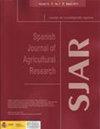Spatial discounting in food products from high natural value agroecosystems
IF 0.8
4区 农林科学
Q3 AGRICULTURE, MULTIDISCIPLINARY
引用次数: 0
Abstract
Aim of study: To test the hypothesis that consumers’ willingness to pay (WTP) for traditional food products expresses their willingness to conserve the bundle of ecosystem services (ES) provided by the territories of origin and that the intensity of these preferences is subject to spatial discounting. Area of study: We used Iberian dry-cured ham as a case study. This is a traditional and highly appreciated product characteristically produced in the Dehesa agroforestry system (southern Iberian Peninsula), an agricultural system characterized by high levels of ES provision. Material and methods: The analysis relies on a discrete choice experiment using some recently developed spatial indexes that go beyond traditional “distance-decay” effects. This method was fed with primary data gathered from a face-to-face survey administered in Andalusian food retail establishments to 1,158 respondents who had bought Iberian ham (acorn- or fodder-fed) at least once in the last year. Main results: The results provide evidence of the effects of spatial discounting on the purchase of acorn- and fodder-fed Iberian hams associated with the agroecosystem in which they are produced. These effects presumably stem from consumers’ cultural identity linked to the agroecosystem of origin and their willingness to support the local economy and communities. In addition, in the case of acorn-fed Iberian ham, spatial discounting is affected by consumers’ perception of the ES provided by the agroecosystem, with consumers who significantly perceive these services showing a higher WTP, regardless of their place of residence (no spatial discounting). Research highlights: Relevant insights can be gained from the results, especially concerning marketing strategies and the adoption of environmental and sociocultural certifications.高自然价值农业生态系统中粮食产品的空间贴现
研究目的:检验消费者对传统食品的支付意愿表达了他们保护原产地提供的生态系统服务的意愿,以及这些偏好的强度受到空间折扣的影响的假设。研究领域:我们使用伊比利亚干腌火腿作为案例研究。这是德赫萨农林系统(伊比利亚半岛南部)生产的一种传统且备受赞赏的产品,该农业系统以高水平的ES供应为特点。材料和方法:该分析依赖于离散选择实验,使用了一些最近开发的超越传统“距离衰减”效应的空间指数。该方法采用了在安达卢西亚食品零售机构对1158名去年至少购买过一次伊比利亚火腿(橡子或饲料喂养)的受访者进行的面对面调查中收集的主要数据。主要结果:这些结果提供了空间折扣对购买橡子和饲料喂养的伊比利亚火腿的影响的证据,这些火腿与生产它们的农业生态系统有关。这些影响可能源于消费者与原产地农业生态系统相关的文化认同,以及他们支持当地经济和社区的意愿。此外,在橡子喂养的伊比利亚火腿的情况下,空间折扣受到消费者对农业生态系统提供的ES的感知的影响,显著感知这些服务的消费者表现出更高的WTP,无论他们的居住地如何(没有空间折扣)。研究亮点:可以从结果中获得相关见解,特别是关于营销策略以及环境和社会文化认证的采用。
本文章由计算机程序翻译,如有差异,请以英文原文为准。
求助全文
约1分钟内获得全文
求助全文
来源期刊

Spanish Journal of Agricultural Research
农林科学-农业综合
CiteScore
2.00
自引率
0.00%
发文量
60
审稿时长
6 months
期刊介绍:
The Spanish Journal of Agricultural Research (SJAR) is a quarterly international journal that accepts research articles, reviews and short communications of content related to agriculture. Research articles and short communications must report original work not previously published in any language and not under consideration for publication elsewhere.
The main aim of SJAR is to publish papers that report research findings on the following topics: agricultural economics; agricultural engineering; agricultural environment and ecology; animal breeding, genetics and reproduction; animal health and welfare; animal production; plant breeding, genetics and genetic resources; plant physiology; plant production (field and horticultural crops); plant protection; soil science; and water management.
 求助内容:
求助内容: 应助结果提醒方式:
应助结果提醒方式:


